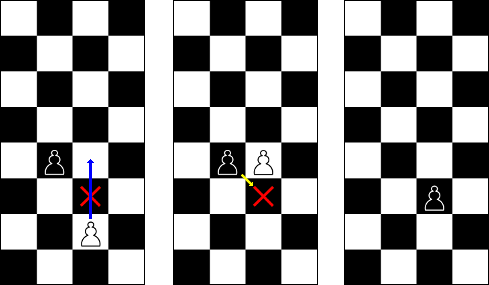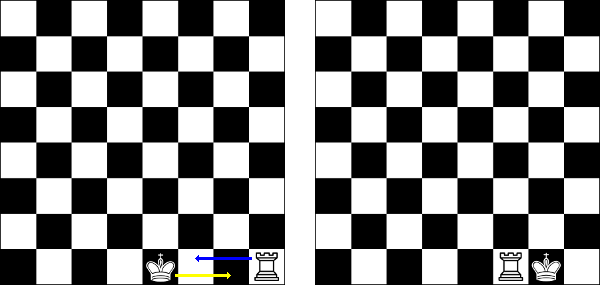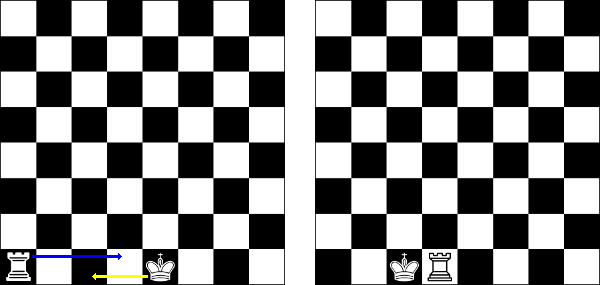When the rule to allow a pawn to move two squares on its first move was added, a pawn could potentially evade capture by an opponent's pawn by going past a square under attack. The en passant capture (from the French for “in passing”) was added to prevent this. The capture is made exactly as if the pawn had moved only one square forward. There are special conditions for the en passant capture:
A pawn must move two squares from its initial position in a single move.
An opposing pawn must be attacking the square the first pawn moved over.
The first pawn can be captured as if it moved only one square.
The capture can only be made at the opponent's next move. If the capture is not made, the first pawn is safe from en passant capture for the remainder of the game.
In the diagram below, the white pawn has not moved from its initial position. Its first move can be one or two squares ahead. The first square is under attack by the black pawn (pawns attack diagonally) as indicated by the red X. The white pawn moves ahead two squares, avoiding the attack. On the next move, the black pawn moves into the square where the white pawn would have moved if it could only move a single square on the first move. The black pawn successfully attacks the white pawn, and captures it “en passant”. The white pawn is removed from play.

Castling uses the king and one rook, and is the only time in a game when more than one piece may be moved during a single turn. In castling a king is moved two squares towards the rook and the rook is then moved to the square on the other side of the king.
Castling has some rigid requirements:
Both the king and the rook may never have moved during the game.
There are no pieces between the king and the rook.
The king is not in check.
The king does not cross over a square that is attacked by the opponent's pieces.
The king does not end the move on a square that is attacked by the opponent's pieces. (The castling move cannot end with the king in check.)
There are two forms of castling. One is called “kingside castling”. It is also known as “short castling”, since it is performed to the short side of the board and the rook only has to move two squares to the opposite side of the king. It is diagramed below:

The second form of castling is called “queenside castling”, where the king moves towards the square vacated by the queen. It is also known as “long castling”, since it is performed to the long side of the board and the rook has to move three squares to the opposite side of the king. It is diagramed below:

Note
In Knights to castle you move the king two squares towards the rook. Knights will complete the castling move. Do not move the rook, as Knights assumes you wish only to move the rook and not to castle.
When a pawn has reached the other end of the board it cannot move further, since it always must move forward and not backwards. The pawn is then turned (“promoted”) into a queen, rook, bishop or knight. This promotion occurs as part of the move. Usually the piece chosen is the queen, often called “queening”. The other pieces are sometimes chosen when their movements will aid in checkmate, often called “under promoting”. The pawn can be turned into a piece even if that type of piece is still on the board. Thus you can have two queens or three rooks, bishops or knights in play at once.